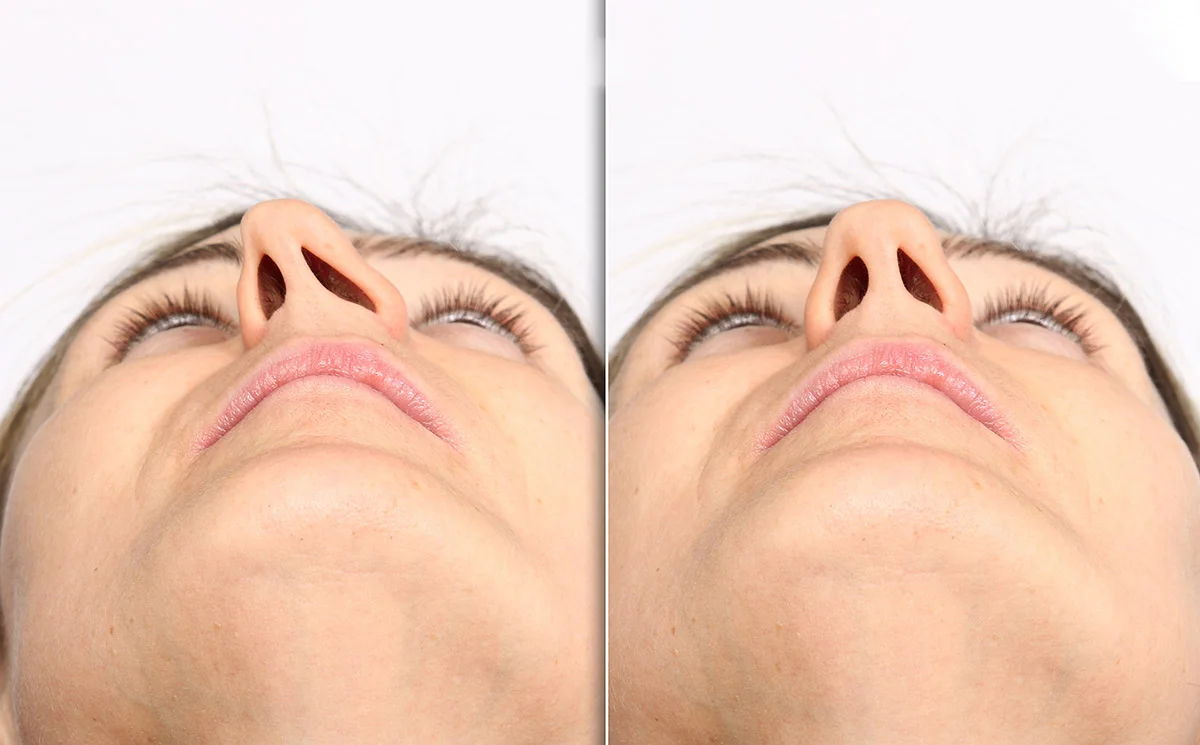
It’s not always allergies—sometimes the structure is the real issue
You wake up feeling blocked. One nostril won’t cooperate. Breathing feels uneven. Some days it’s better. Other days it’s not. You reach for antihistamines. Saline. Steam. But nothing fully clears it. That’s when the question starts to form: maybe it’s not just allergies. Maybe the inside of your nose is built this way.
A deviated septum doesn’t always show itself. But when it does, it shows up in slow, frustrating ways. It’s not a cold. It’s not the weather. It’s anatomy. Quietly shifting your breath from balance to struggle.
The septum divides—but not always equally
Inside your nose, the septum is a thin wall made of cartilage and bone. It separates the two nostrils and helps shape airflow. Ideally, it sits centered. But in many people, it doesn’t. The wall bends. Tilts. Curves. Sometimes slightly. Sometimes severely.
Some are born with this. Others develop it from injury. A fall. A hit. A childhood accident that seemed small at the time. The result is the same—uneven airflow. One nostril works harder. The other narrows. The body adjusts until it no longer can.
It’s not always visible. But it’s always felt.
Breathing becomes work—even if you don’t notice
With a deviated septum, breathing doesn’t stop. But it becomes uneven. Subtle. Effortful. You may not even notice you’re breathing through your mouth more. Or favoring one side.
At night, it gets worse. Lying down adds pressure. Snoring may begin. Sleep feels lighter. Less restorative. Some people toss and turn. Others wake with dry mouths and headaches.
The body keeps going—but not easily.
Congestion doesn’t clear because the path is bent
When you catch a cold or struggle with allergies, a deviated septum makes everything harder. Mucus drains poorly. Swelling feels worse. Medication helps—briefly—but relief never lasts.
This leads to a cycle. Decongestants. Nasal sprays. Temporary ease, followed by more blockage. You think you’re sick. But it’s structure. The congestion isn’t just inflammation—it’s a blocked pathway.
No medicine can straighten a wall.
Nosebleeds and dryness may become common
The narrowed side of your nose sees more airflow. It dries out. The tissue becomes fragile. Bleeding starts. Often mild. Often repeated.
The dry side cracks easily. The congested side collects mucus. Neither works quite right. And together, they leave you chasing balance with every breath.
You hydrate. You treat. But the structure doesn’t change.
Headaches can trace back to imbalance
A bent septum alters more than breath. It can affect sinus drainage. Pressure builds. This creates tension around the eyes. In the forehead. Along the temples.
Some people call them sinus headaches. Others think they’re migraines. But often, the trigger is physical: trapped air, inflamed tissue, and off-kilter airflow that leaves the face unbalanced.
Treating the symptom rarely treats the source.
Exercise and sleep may suffer—without a clear reason why
You run. You walk. You work out. But breath feels shallow. Fast. Like air doesn’t reach fully. During sleep, you snore. Wake often. Wake tired.
It’s easy to blame stress or age. But a deviated septum can restrict airflow just enough to limit performance and recovery. The body adjusts quietly—until it can’t.
One nostril shouldn’t be doing all the work.
Not every deviation needs surgery—but some do
Mild deviations cause mild symptoms. But when quality of life suffers, surgery may help. Septoplasty straightens the septum. It’s not cosmetic. It’s structural. It opens the airway.
The procedure is short. Recovery involves swelling, but often less discomfort than expected. Many feel improvement within weeks.
Surgery isn’t the only option—but for some, it’s the only lasting one.
A specialist can see what you can’t
From the outside, noses often look straight. But inside, small curves can create major issues. An ENT specialist uses tools to view deep into the nasal passage—something no mirror can show.
They can tell what’s inflamed. What’s crooked. What’s causing the imbalance. That clarity changes everything.
Because when you name the structure, you stop blaming yourself.
